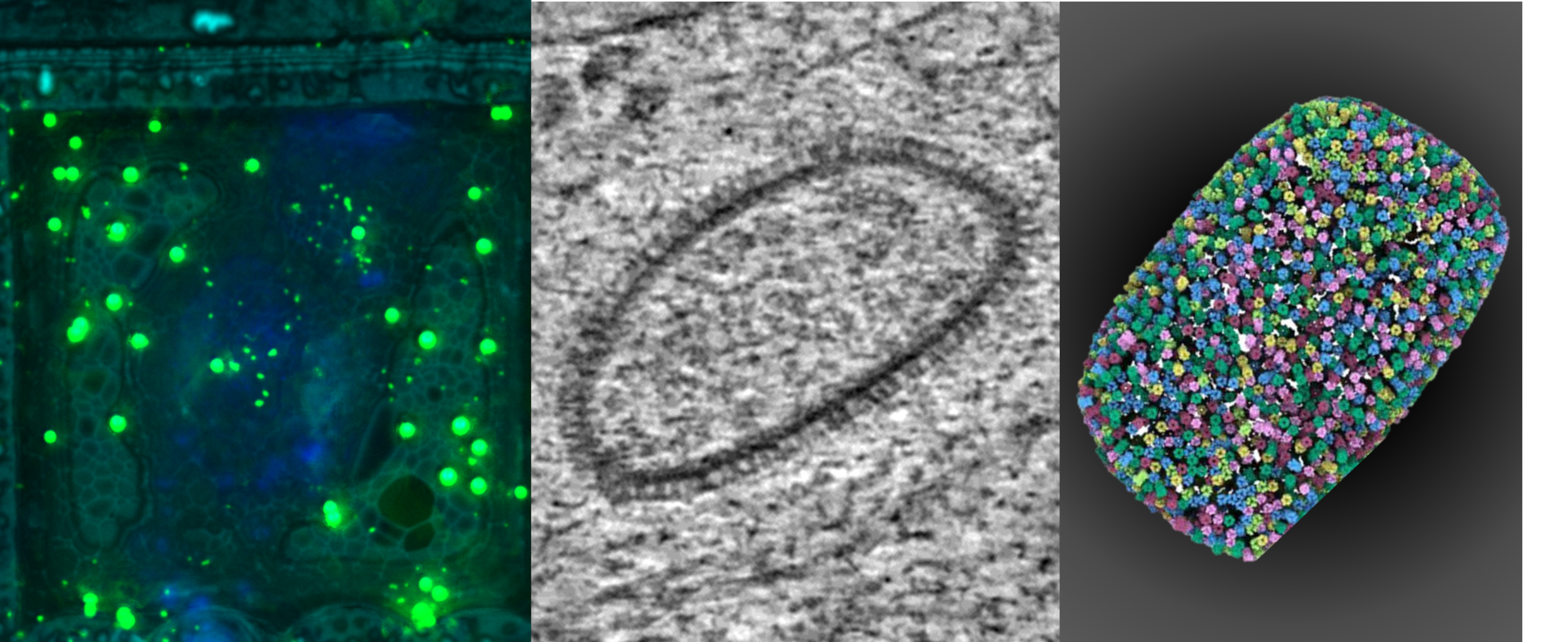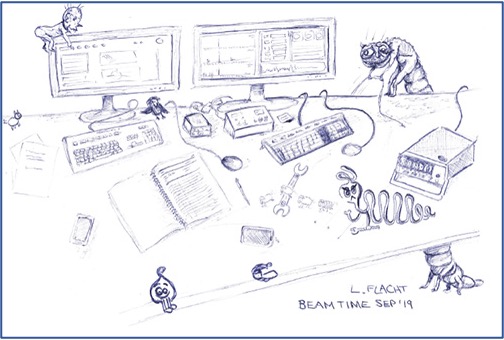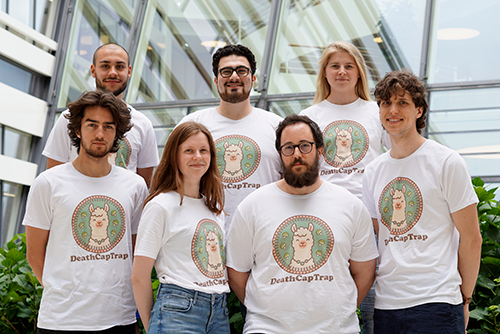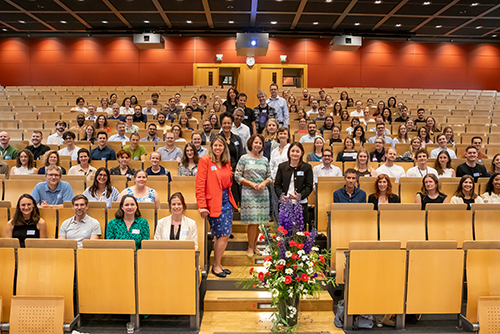Composition of Vaccina Virus Core Revealed
Vaccinia virus is considered to be the prototype of the poxvirus. This virus was used as a live vaccine to eradicate smallpox in the 1970’s; however, the structure of the mature virus is poorly understood. CSSB’s Grünewald group together with collaborators have revealed some key insights into the composition and structure of this poxvirus’ core. Their findings have been published in Nature Structural & Molecular Biology.

Composed of roughly 200 proteins the vaccinia virus’ asymmetric shape, large size and compactness make it a challenging virus for researchers to investigate. “By combining cryo-electron tomography under native conditions at CSSB’s cryo-EM facility with subtomogram averaging and AlphaFold2, we were able to obtain higher resolution sub-structures of the vaccinia core and could therefore gain new structural insights,” explains Emmanuelle Quemin, one of the papers joint corresponding authors.
The first step of vaccinia’s replication cycle is the fusion of the mature virus during cell entry and the subsequent release of the viral core into the cytoplasm. The viral core contains the DNA of the virus needed for replication. As the release of the viral core is a rare and fast event, the researchers studied the core both in situ, in the cellular cytoplasm, and in vitro, using a version of the virus which had its membrane removed by detergent.
The researchers specifically examined the palisade, a dense spike-like layer on the surface of the vaccinia viral core. They determined that these spike-like protrusions, or stakes, on the outer layer of the palisade are densely packed trimers of the major core protein A10. “The outer layer of the palisade was thought to form an organized lattice structure,” notes Simon Corroyer-Dulmont one of the paper’s first authors “However, we discovered that the stakes are actually more randomly organized and have an inherent flexibility.”
Unraveling composition of the vaccinia palisade contributes to the overall understanding of poxviruses such as M-pox which recently caused an outbreak. “We expect the core composition we discovered is similar to that of other poxviruses with epidemic potential,” states Kay Grünewald another of the paper’s joint corresponding authors “Thus understanding more about the vaccinia core structure brings us a step closer to figuring out how poxviruses function.”
Original Publication:
Liu, J., Corroyer-Dulmont, S., Pražák, V. et al. The palisade layer of the poxvirus core is composed of flexible A10 trimers. Nat Struct Mol Biol https://doi.org/10.1038/s41594-024-01218-5



